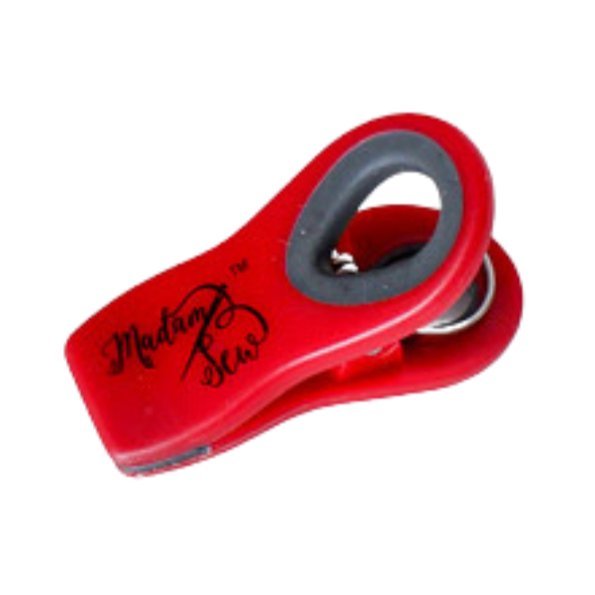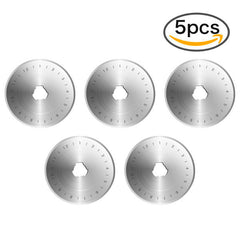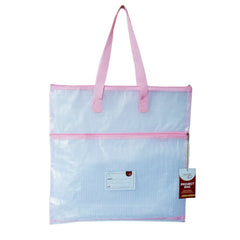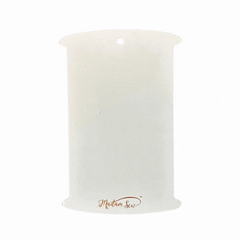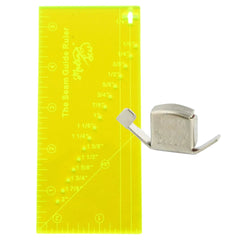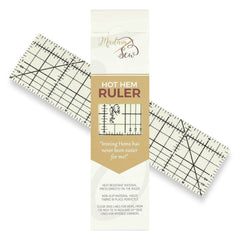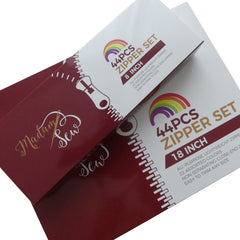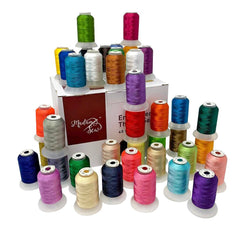How to Make an Open Wide Zipper Pouch
Hello all!
Today I have a project where I will use Madam Sew’s triangle templates. I didn’t have time to make an actual quilt, but I wanted at least a small project to get a taste; I’m constantly in need of good project bags for my knitting and crochet projects, so I figured a pretty open wide boxed pouch with a zipper would be great.
1. Materials
-
- 5-piece triangle template set
- Rotary cutter
- Non-slip ruler 6" X 24"
- Small scissors
- ¼” quilting foot with guide- #17 in the 32 Presser Foot Set
- Adjustable zipper foot- #20 in the 32 Presser Foot Set
- Edge joining foot (to top stitch the zipper tab)- #27 in the 32 Presser Foot Set
- Fabric scraps in three different colors/prints
- Lightweight interfacing
- Zipper at least 14” long
2. Cut the Fabric
Using your ruler and rotary cutter, cut out your fabric rectangles according to the guide above.
To cut your triangles, square out one edge of your fabric and place it towards you. Align one side of the 3.5” triangle template with the edge.
Press firmly on the template and slide the rotary cutter from top to bottom slightly past the top of the triangle. Repeat with the other side.
Without moving the template, move your excess fabric out of the way. Continue to press down on the template and use your rotary cutter to cut off the tips.
3. Assemble the Triangle Strip
Place your first two triangles right sides together, paying attention to directional prints if you are using them.
Using the ¼” foot with guide, sew a ¼” seam along one side.
Open up the triangles and finger press the seam towards the darkest fabric.
Turn the right side to face you and place the next triangle, right side down, on the left side. Aligning the left edges, sew another ¼” seam.
Continue adding the remaining triangles in this way until you have all eight joined together.
Press seam allowances towards the darker fabric.
4. Assemble and Trim the Top of the Front Panel
Place the triangle strip right side up on the table. Place the 2”x14” strip, right side down, along the edge with the base of the main color triangles (so that you are matching the triangle color to the strip color). The 2” strip should be longer than the triangle strip, so let the edges hang on both sides.
Join with a ¼” seam and press seam allowances towards the solid strip.
Trim the overhanging triangles and strip so that your total width is 12”.
Next, trim the height to 4.5” by cutting off the excess from the solid fabric strip side.
5. Finish Assembling the Exterior Panels
Grab the two 12 x 5.5” panels. Place your freshly assembled front panel piece right side up, and place one of these panels, right side down, on it; aligning it with the triangles side.
Sew a ¼” seam and press seam allowances away from the triangles.
Now assemble the back panel in the same way, using the 12x4.5” main fabric rectangle instead of the pieced triangles piece.
6. Apply Interfacing
Follow the manufacturer’s instructions to apply interfacing to the wrong side of each lining and exterior panels. Don’t forget the small 2x3” piece!
7. Install the Zipper
Lay down the back exterior panel on your table right side up. Place the closed zipper, teeth side down, on top, aligning the pull with the right edge. I use a washable school glue stick to secure the zipper to the fabric.
Now place a lining panel, right side down (so that fabric right sides are touching) on top, aligning a long edge with the zipper tape.
Mark 1” from the side opposite the zipper pull.
Pull the end of the zipper down away from the edge of the fabric for that inch and secure in place.
Using your adjustable zipper foot, sew a ¼” seam, all the way to the end (you want to sew that last inch without catching the zipper).
Turn right side out and press the fabric away from the zipper teeth.
Now place the piece with the lining side up and the zipper towards you. Apply glue to the edge of the zipper tape (stopping 1” from the end of the fabric)
Next, place the other lining piece, right side down, over the whole piece, aligning the long edge with the zipper and press down so that the glue adheres to the fabric.
Turn the whole piece over so that the zipper teeth are facing up. Apply glue and lay the front panel on top, right side down, aligning the main color (narrow) strip with the zipper tape.
Again, pull the zipper off the edge for the last inch and secure in place with a zipper foot. Sew a ¼” seam as before.
Turn to right side and press fabric away from the zipper.
8. Finish the Zipper
Grab the 2x3” interfaced fabric rectangle and fold in short edges by ½”. Press. Fold in long edges by ½” and press again. Now fold in half so that you have a square and press. This will be your zipper tab.
Cut the zipper two to three inches longer than the side of the pouch.
Now, without unfolding the short edges, wrap the zipper tab around the zipper and secure in place.
Use the edge-joining foot to top stitch all around the tab.
9. Assemble the Pouch
Open the zipper at least halfway and fold the tab end towards the inside.
Bring the top panels right sides together, matching the bottom edges. Turn and repeat with the lining panels.
Make sure that the center seam is aligned on both sides and secure with a clip.
Clip all around and mark a 3-4” opening in the center of the lining’s long side.
Sew a ½” seam all around, starting and stopping at either side of the marked opening.
10. Box the Corners
Open up a corner so that the seam runs diagonally down the center. Try to match the seams as best you can.
Mark a 4” line perpendicular to the seam.
Sew a seam along the line you just marked, backstitching at the beginning and the end.
Trim the corner leaving about a ½” seam allowance.
11. Finish and Enjoy!
Turn the pouch right side out and finish the opening in the lining by hand or with a narrow seam.
Insert the lining into the bag and fill with whatever suits your fancy (mine is already holding my current crochet project).
I can’t wait to see your triangle template projects, let us know what you make in the comments!
If you need more inspiration, we have a blog with a list of projects to make using triangle templates.
Looking for free tutorials for other types of zippered pouches? Maybe you want a clear vinyl bag or a simple flat zippered pouch?
Ana
Blogging for Madam Sew







